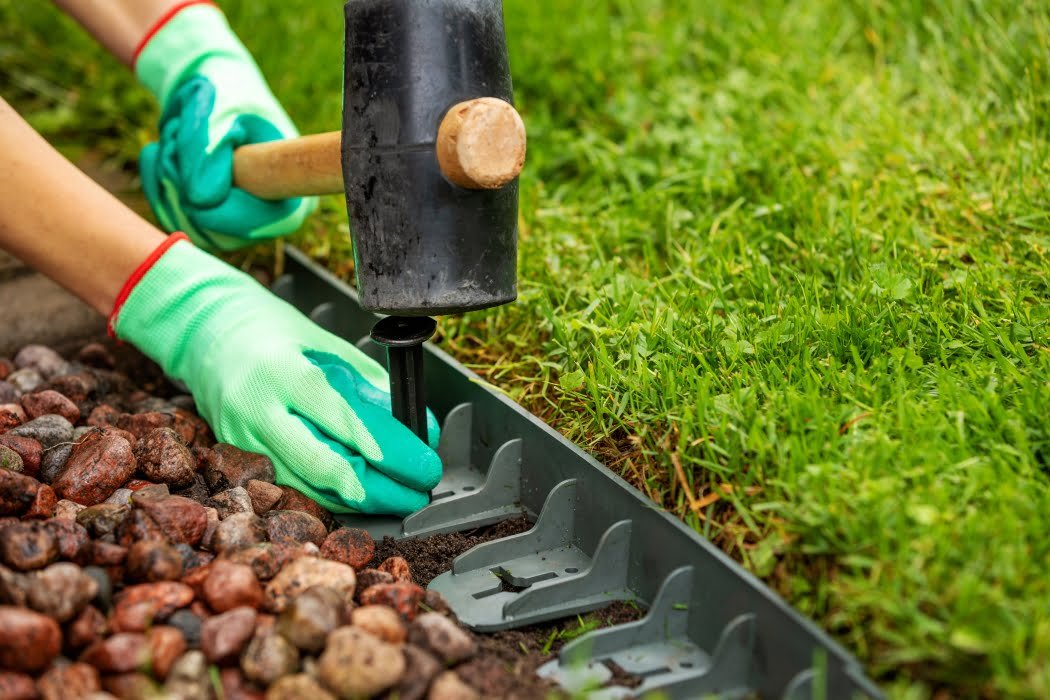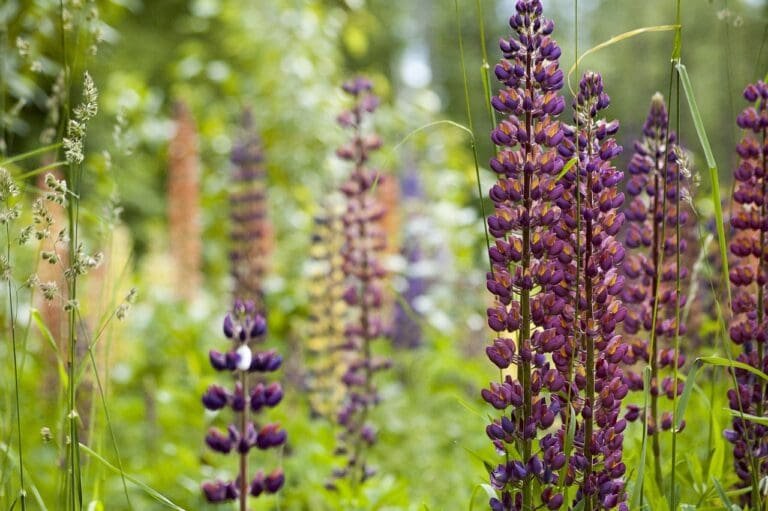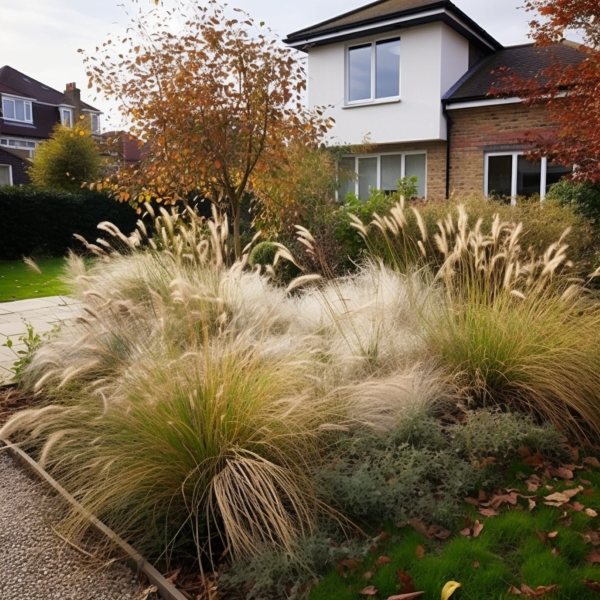One of the most effective ways to smarten up your garden is to ensure it has crisp well-defined edges around your lawn. In this post we give an overview of some of the best types of lawn edging and consider their durability, ease of installation and effectiveness.
Affiliate Disclaimer: As an Amazon Associate, I earn from qualifying purchases.
You might also be interested in: What Colour Should I Paint My Garden Shed?
| Type of Lawn Edging | Description | Durability | Ease of Installation | Effectiveness | Cost |
|---|---|---|---|---|---|
| 1. Core Edge | Premium, sturdy solution with flexible design for natural curves. Made from durable 1.6mm thick steel. A range of colour available. | High | Moderate | High | *** |
| 2. Eco Trade Counter – Flexible Edge | 800mm long lengths made from recycled materials. Flexible design for straight runs or curves. Suitable for various surfaces. | Moderate | Moderate | Moderate | ** |
| 3. FlexiBorder | Easy-to-install option made from recycled rubber. Flexible up to 70° for curved beds. UV/weatherproof. Various colour choices. | Moderate | Moderate | High | *** |
| 4. Treated Timber Sleepers | Neat and clean edge option, adjustable for height or raised beds. Suitable for straight runs but challenging for tight curves. | High | Moderate | High | *** |
| 5. Brick Edging | Traditional option providing classic look. Can be laid flat or on end for different heights. Suitable for straight runs, challenging for curves. | High | Difficult | High | *** |
| 6. Ground Cover Plants | Natural, soft border option using low-growing plants. Requires more maintenance but supports biodiversity. Creates seamless transition. | Low | Easy | Moderate | * |
| 7. Reusing Rocks and Stones | Creative and cost-effective solution using natural elements. Provides durable boundary with added appeal. | High | Easy | Moderate | * |
1. Metal Lawn Edging
Metal lawn edging, such as CORE EDGE, is one of the best types of lawn edging. Its lengthy metal spikes provide firmness and ensure easy installation, and its flexibility enables you to create soft, flowing curves that give a natural look to your garden. The pieces slot into each other, making it a breeze to disassemble and reuse if needed. It is a premium and sturdy solution that will last you a long time.
The modern and sleek corten steel design will add a stylish flair to your garden, making it look elegant and refined. CORE EDGE is constructed from 1.6mm thick steel, which means it is built to withstand harsh weather conditions, providing you with a long-term solution to your garden edging needs. It is possible to install it without using any other tools, but a rubber mallet may come in handy when dealing with firmer ground.
2. Eco Trade Counter Flexible Edge
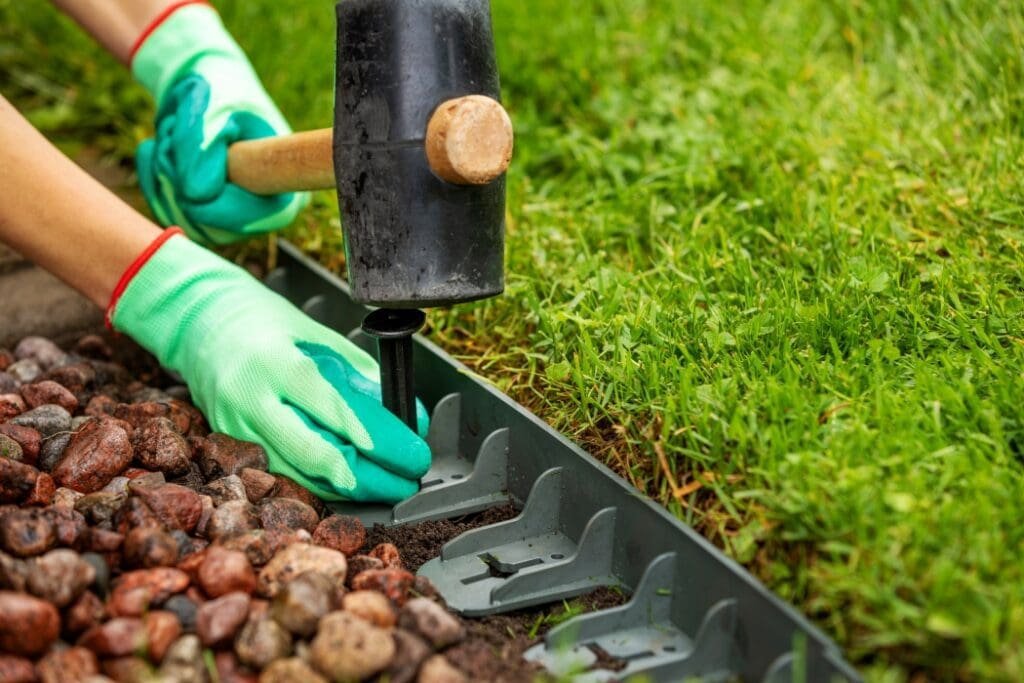
The Eco Trade Counter Flexible Edge is an great option for lawn edging and is a bit more affordable than steel alternatives. It comes in packs of 20 with each length measuring 80cm. With its flexible design, you can easily create straight runs, curved borders, or even full circles around trees and ornaments.
This edging is made entirely from recycled materials and is fully recyclable, making it a great environmentally-friendly choice. Moreover, it is suitable for retaining gravel and resin bound stone driveways/pathways and for edging grass lawns and artificial turf gardens.
3. FlexiBorder Garden Edging
FlexiBorder is an excellent option for creating a defined edge between your lawn, pathways, or other garden features. It’s incredibly easy to install, as each piece clips into the next and is secured using the colour-coded pins provided. As its name suggests, FlexiBorder is flexible up to a 70° angle, making it simple to create beautiful flowing curved beds.
This lawn edging comes with a high edge and a low edge, with the low edge facing your lawn, allowing your lawnmower to safely travel along and cut to the edge of the lawn without causing any damage to the product. It also claims to be able to handle strimmers for when you’re tidying up those edges.
Made from recycled rubber, this lawn edging is an eco-friendly, long-lasting solution, and a safe choice for children’s play areas. The product is UV and weatherproof, meaning it can withstand the test of time and the UK’s unpredictable weather. It’s available in different colour choices, including black, brown, terracotta, and grey, so you can choose one that suits your garden’s aesthetic.
4. Treated Timber Sleepers
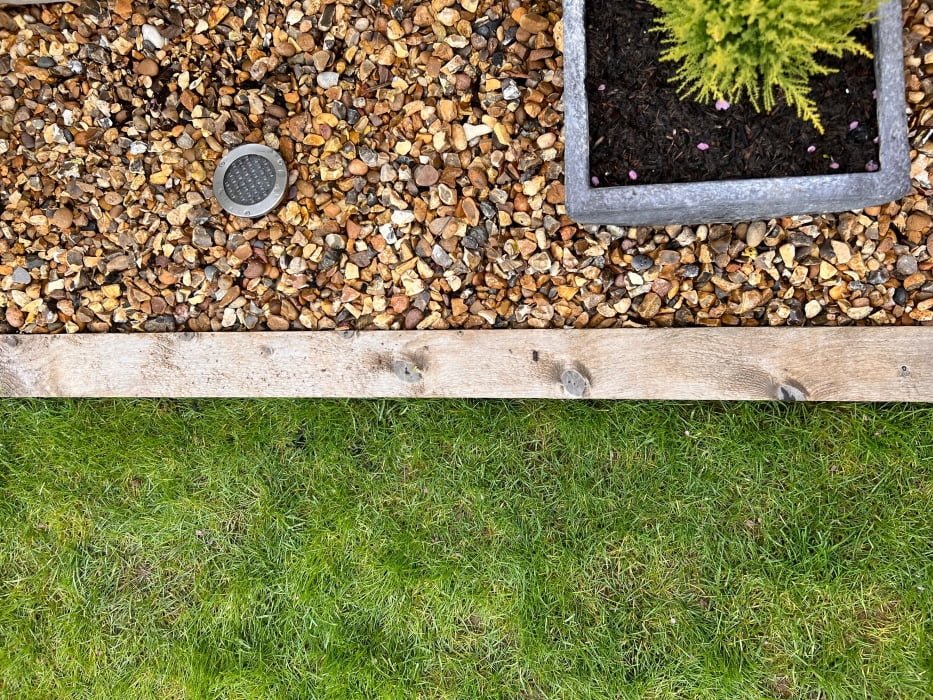
Treated timber sleepers are a popular choice for garden edging, providing a neat and clean edge to your lawn. They can be installed at a height of just one sleeper for a simple clean edge, or multiple sleepers high to create raised garden beds.
To get started with installation, mark out the area and clear any obstacles. Dig a shallow trench and add a layer of sharp sand or gravel to aid drainage and increase longevity of the timber. Secure the sleepers in place with stakes and join them together with sleeper fixing brackets, ensuring they are level using a spirit level. While sleepers are perfect for straight runs, if you want to create curved edges, you might need to install them vertically to achieve tight curves.
5. Brick Edging
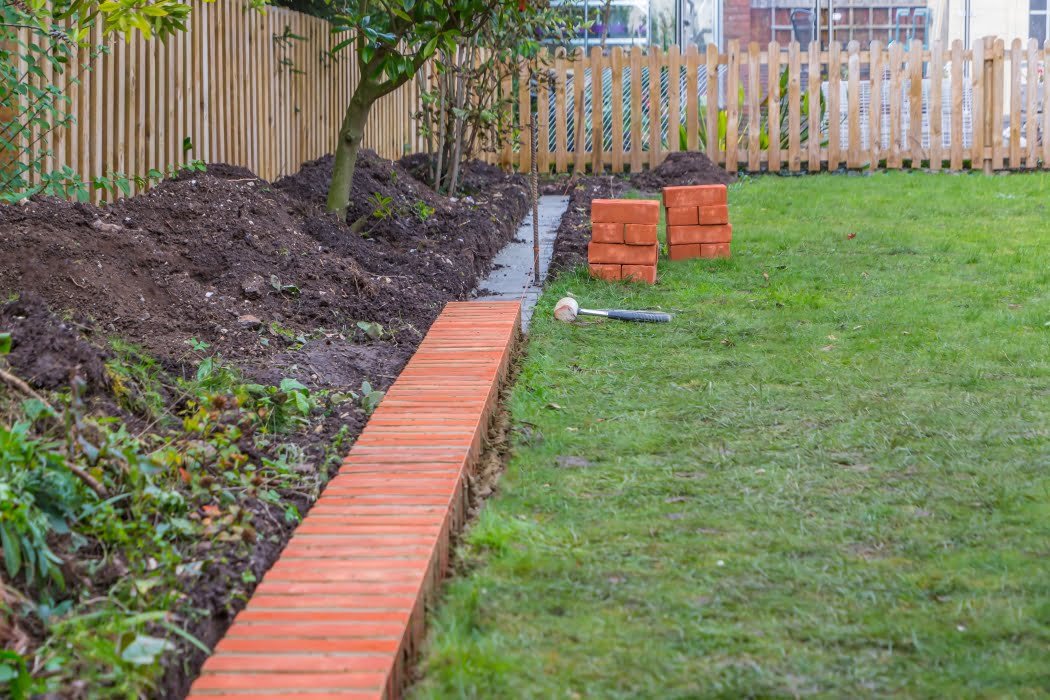
For those who prefer a more traditional and classic look for their lawn edging, bricks are an excellent option. They can be laid flat and flush with the lawn, allowing your mower to easily move over them, or they can be placed on their end to create a higher raised edge.
To ensure that the bricks remain in place and are effective, it is best to have them cemented in place. To do this, begin by digging a trench that is 15cm deep and shallowly fill it with a layer of gravel or hardcore. Next, create a mortar mix using a ratio of 3:1 building sand to cement, adding water until the mixture has a firm but moist consistency. Use a rubber mallet to tap each brick into place and a spirit level to ensure that they remain straight as you work your way around the edge of your lawn. If you are in any doubt, it is always recommended to contact a local landscaper.
6. Ground Cover Plants
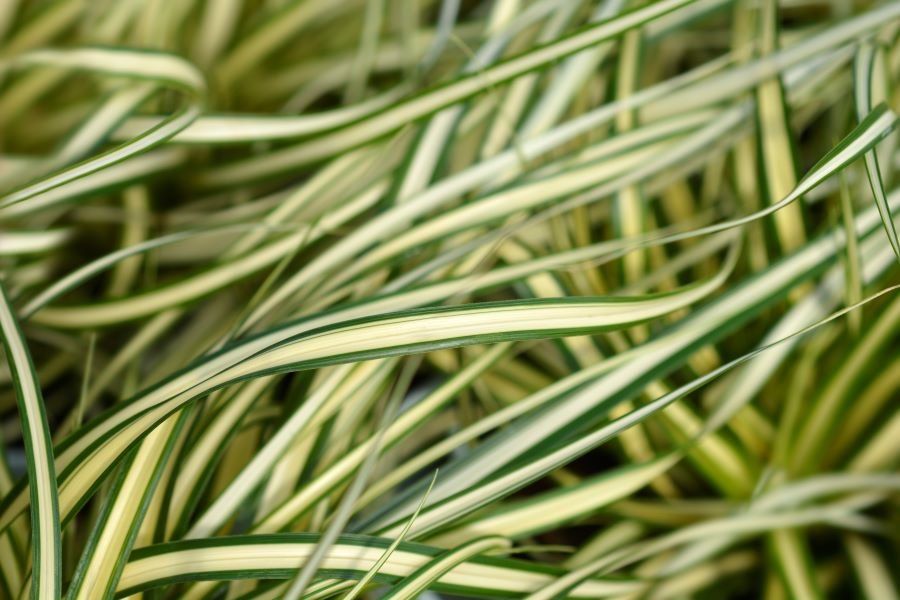
Rather than installing edging products, consider using low-growing ground cover plants to create a natural and soft border for your lawn. While this approach may differ from the traditional use of edging materials, it can add an organic and natural feel to your garden while supporting biodiversity and pollinators. Using small evergreen plants like Carex (sedges) at the front of your garden borders can create a seamless and visually appealing transition from your lawn to your garden beds. This approach may require more maintenance and upkeep compared to using traditional edging materials, but it can offer unique benefits and contribute to a healthier garden ecosystem.
7. Rocks and Stones
For an economical and environmentally friendly approach, consider the idea of repurposing rocks and sizable stones. These can either be sourced from your own garden or readily acquired at no cost through platforms like Facebook Marketplace. Incorporating these natural elements not only injects character and charm into your garden but also establishes a resilient and enduring perimeter for your lawn.
Final Thoughts – Best Types of Lawn Edging
In conclusion, selecting the right lawn edging depends on your personal preferences and budget. For a durable and long-lasting solution with a modern look, metal lawn edging like CORE EDGE can be a great option. However, if you’re on a tight budget and want a more natural edge, using low growing ground cover plants or reusing rocks and stones can be a creative and cost-effective alternative. Whatever option you choose, a well-defined lawn edge can enhance the overall look of your garden and make on-going maintenance much easier.
In my opinion, cheap plastic lawn edging products which are typically sold in rolls, can be effective in the short term, but their quality and durability may not compare to higher quality materials such as metal or timber. While they may be an affordable option, they may not withstand the test of time and may need to be replaced frequently. However, some plastic edging products are designed to be more durable and long-lasting, so it’s important to do your research before making a purchase. In general, it’s a good idea to invest in quality materials that will provide a long-term solution for your garden edging needs. As the old saying goes… “You usually get what you pay for”.

